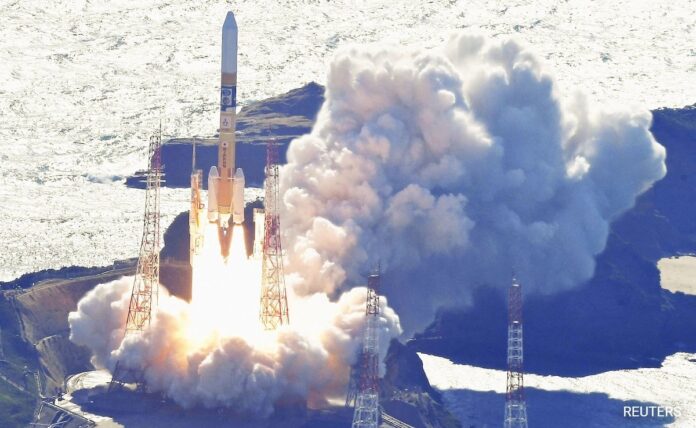Japan is embarking on its latest lunar exploration endeavour with the Slim (Smart Lander for Investigating Moon) mission, seeking a gentle touch-down on the Moon’s surface. The mission targets a slope near the equatorial crater Shioli, distinguishing itself as a precision landing attempt following a recent private American company’s lunar landing failure.
The “Japan Aerospace Exploration Agency (Jaxa)” aims to increase the success rate of lunar landings, which historically stands at only about half of all attempts. Slim, aptly nicknamed “Moon Sniper,” incorporates advanced navigation technologies to enhance precision during its descent.
Utilising rapid image processing and crater mapping, Slim’s onboard computer aims to bring the lander within 100m (330ft) of the designated touch-down point. The descent manoeuvres are scheduled to commence at midnight Japan Standard Time on Saturday, with an anticipated gentle landing on the lunar surface 20 minutes later.
If successful, Japan will join the exclusive group of countries, including the US, the Soviet Union, China, and India, that have achieved intact lunar surface landings. Jaxa expresses high confidence in becoming the fifth nation to accomplish this feat.
The descent will be live-streamed on Jaxa’s YouTube channel. Despite Slim’s anticipated short lifespan on the lunar surface due to temperature-related challenges, the mission aims to utilise a scientific camera to study rocks around the Shioli crater. Additionally, two small rovers, including a hopping robot weighing approximately 2kg (4.4lb) and a shape-changing ball developed by Tomy, are expected to explore the lunar terrain.
Jaxa’s prior experience landing on asteroids provides valuable insights for Slim’s mission, even though the Moon’s larger gravity presents added challenges. Previous lunar landing attempts by private companies, such as Ispace’s Hakuto-R, faced complications, highlighting the difficulty of achieving precise landings.
As Japan ventures into this lunar soft landing, the mission holds promises of scientific exploration and technological advancements despite the challenging conditions of the moon’s surface.

















